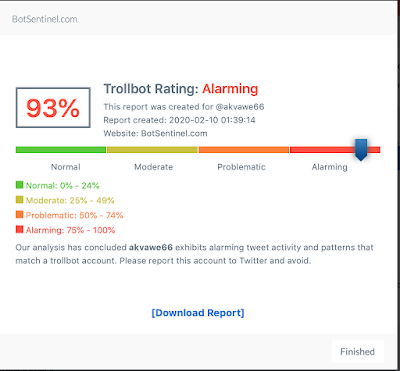I was out-of-state when my doctor's office called to set up a telehealth appointment for me. The date they wanted was when I was going to be back in Alaska. I thought, wow, this is great. If I'm out-of-state, I can still have an appointment with my doctor if needed.
But they said, "No, you have to be in Alaska."
For me, that makes no sense. If I need a doctor when I'm not in Alaska, I'd rather see my doctor than a one I don't know. [Of course if there's a need for physical contact or tests, it's not going to work as well.]
So when I had my appointment, I asked, "Why can't we do this if I'm out-of-state?"
The nurse, the doctor, and the doctor's supervisor (this is through Providence) weren't exactly sure. They'd been advised that it had to be Alaska only. Licensing seemed to be a possible reason, but they weren't sure. And they couldn't cite any documents I could see for myself.
Whether this was a state law, regulation, Providence policy or something else, they didn't know.
So I decided I would try to track this down. Here's what I've found out so far.
- During COVID emergency health declarations waived some interstate telehealth barriers, and much of what first pops up in searches are pandemic era webpages, some of which have dates on them.
- A big issue IS the need to be licensed in the state where the patient is located
- Another issue has to do with payment for patients on the state medicaid or other health programs
- Some states allow out-of-state doctors to have telehealth appointments in their states, but the rules aren't easy to figure out for individual doctors. There are various conditions one has to meet, and one has to be sure the source of information reflects the current law, that no changes have been made
 |
| Interactive at the site which appears to be updated frequently |
CCHP (The Center for Connected Health Policy) has some of the best information I've found so far. Their Out Of State Providers page has a map that links to the policies for every state. And they seem to keep it up to date. One was updated this month.
For instance, here's what it says for Arizona:
"Arizona
Last updated 11/07/2023
A provider who is not licensed within the State of Arizona may provide Telehealth services to an AHCCCS member located in the state if the provider is an AHCCCS registered provider and complies with all requirements listed within A.R.S. § 36-3606.
AHCCCS refers to Arizona Health Care Cost Containment System. The link isn't really that complicated, but if I were a physician, I'd want an attorney to read it.
"Some states have temporary practice laws to support existing provider-patient relationships and minimize gaps in care. These laws allow a provider to practice for a limited amount of time, usually less than 30 days, in another state if their patient is temporarily visiting that state for business, a family visit, or other reasons."
This includes what I would be after - treating one of their regular patients who happens to be temporarily out of state.
What states clearly or not so clearlyseem to allow out of state doctors not licensed in the patient's state to provide telehealth services to patients located in their state? Go to the CCHP map page to get details for each state.
- Alaska
- Arizona
- Connecticut
- Georgia - "Physicians with licenses in other states may be licensed under the Interstate Medical Licensure Compact" You can read more about this Compact here. They also have a map that shows which states are in various steps in the process of joining the Compact.
- Indiana - "Out-of-state providers can perform telehealth services without fulfilling the out-of-state prior authorization requirement if they have the subtype “Telemedicine” attached to their enrollment. See Module for requirements."
- Kentucky - this one seems particularly liberal.
- Maryland
- Minnesota
- Oklahoma
- Oregon - Looks like a liberal policy
- South Dakota
- Vermont
- Washington
- Wisconsin
Most of the concern seems to be with the State reimbursing for services to Medicaid patients. There are various conditions placed on out of state providers. Note that I said 'appear to allow out of state" providers. And there were some states that might allow out of state providers who are not licensed in the patient's state, but I couldn't really tell for sure.
So, the problem doesn't seem to lie with the State of Alaska.
The issue is
- with other states - some do and some don't allow it, and those that do have different requirements
- with Providence for making a blanket policy rather than tailoring it to the states that allow for out of state doctors. Providence should know which
- which states do not allow out of state doctors to have telehealth appointments with people in their states,
- which states do allow it, and
- what the requirements are for those that do
- with doctors who have licenses to practice in other states letting Providence know that





